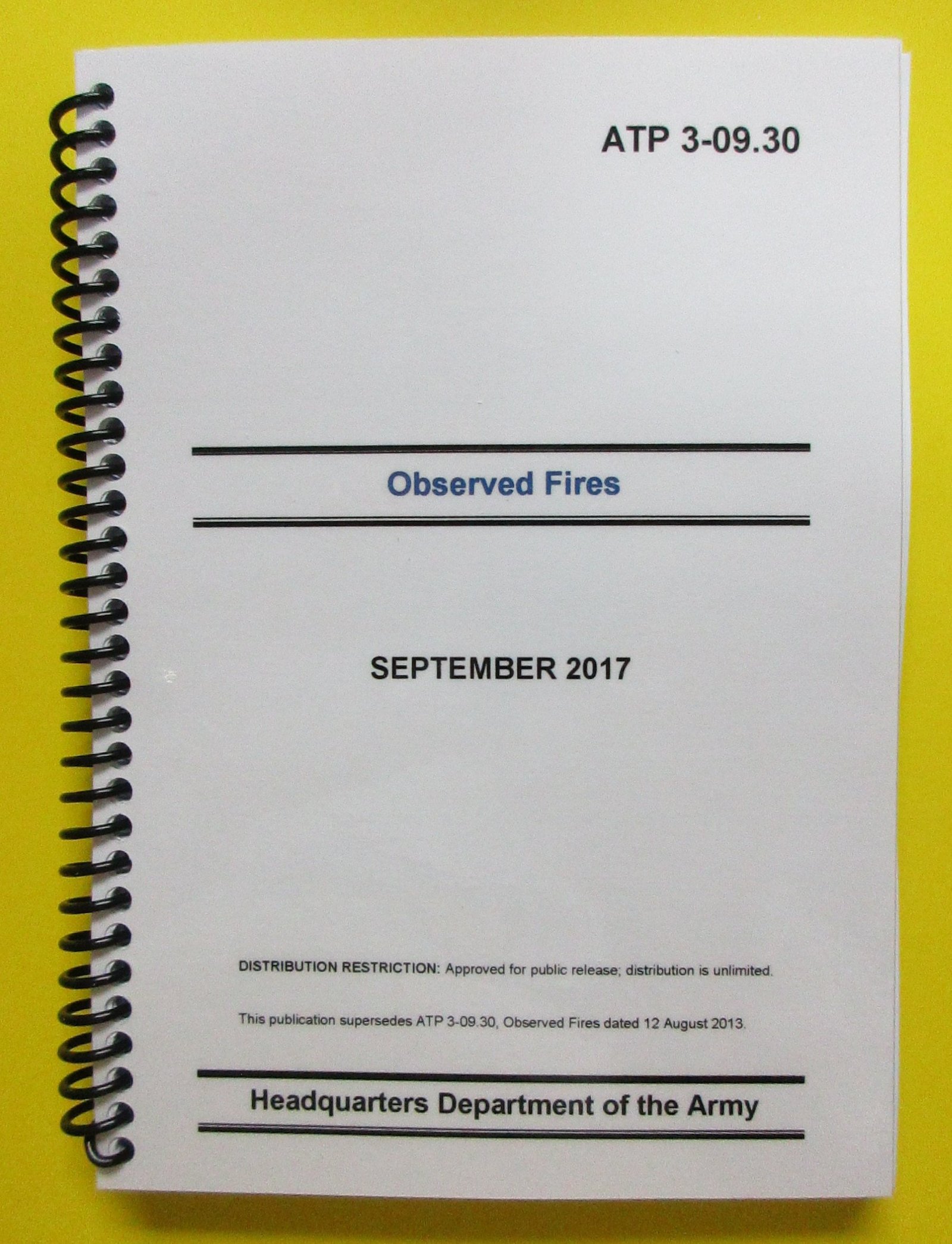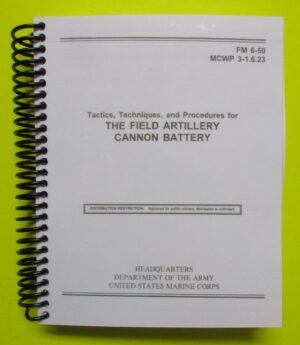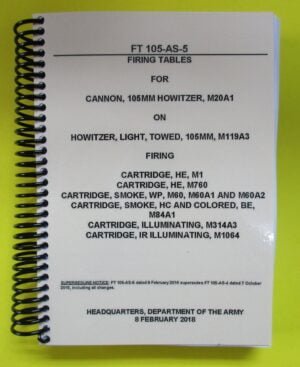dated 28 September 2017
This is the same book as the other ATP 3-09.30 Observed Fire on this web site; however, all pages use “All Weather” water resistant paper. This is not a waterproof book, but better than regular paper. This should protect the book better during increment weather or rough handling.
ALL-WEATHER: Rite in the Rain paper is a wood-based paper that won’t turn to mush when exposed to water, sweat, grease, mud, and the accidental laundry mishap.
Unlike synthetics, the toner on Rite in the Rain won’t wash or rub off in harsh conditions.
WHAT TO WRITE WITH: Use a Pencil or All-Weather Pen and your notes will stay intact. Standard Ballpoint pens write well when paper is dry and your data will not wash off with wet paper. Water-based inks will bead off Rite in the Rain sheets.
Preface
This publication is the principle reference for observed fire.
Army Techniques Publication (ATP) 3-09.30 sets forth the doctrine pertaining to the organization, equipment, mission command, operations, and provides techniques for employing fire support assets as an observer which can be applied within the framework of decisive action or unified land operations. It is applicable to any Army personnel observing for artillery or mortar fires, close air support, army attack aviation, or naval surface fire support.
The principal audience for this publication is FA commanders, staffs, and personnel at the field artillery brigade (FAB), division artillery (DIVARTY), and brigade combat team (BCT) and separate FA battalions and below.
ATP 3-09.30 uses joint terms where applicable. Selected joint and Army terms and definitions appear in both the glossary and the text. Terms for which Publication ATP 3-09.30 is the proponent publication (the authority) are marked with an asterisk (*) in the glossary. Definitions for which Publication ATP 3-09.30 is the proponent publication are boldfaced in the text with the term being italicized. For other definitions shown in the text, the term is italicized and the number of the proponent publication follows the definition.
ATP 3-09.30 applies to the Active Army, Army National Guard of the United States, and United States Army Reserve unless otherwise stated.
Introduction
ATP 3-09.30 is organized into 7 chapters and 2 appendices. The Crater and Shell Fragment Analysis Reports Annex (B) was re-introduced to this ATP. Joint Fires Observer (JFO) responsibilities and duties, Close Air Support (CAS), Army Attack Aviation, Naval Surface Fire Support (NSFS), and “Target Talk On” procedures were added to this ATP.
Chapter 1 is an introduction to fire support and the relationship between maneuver and the observer for the effective accomplishment of tasks during operations.
Chapter 2 describes the responsibilities of members of the fire support team (FIST), forward observer (FO) team, and options for employing observers and guidance for selecting and occupying an observation post.
Chapter 3 describes the requirements for target location and identification by an observer in terms the shooter can understand.
Chapter 4 describes the requirements for the call for fire and the goal to send the required information to the appropriate unit rapidly, accurately, and in sufficient detail to enable the firing unit to engage the target properly.
Chapter 5 details the procedures for adjusting fire.
Chapter 6 discusses the characteristics and any special considerations or techniques required to fire special munitions.
Chapter 7 provides guidance on missions requiring special procedures for the observer.
Appendix A describes the techniques the observer can use to self-locate in both a global positioning, and a degraded, denied, disrupted space operations environment.
Appendix B describes the process of conducting and reporting for crater analysis and shelling reports.
This publication identifies suggested duties and responsibilities of key personnel and addresses techniques for employing fire support and touches on fire support planning considerations
This book is a “mini” (7 1/4 inches high by 5 1/2 inches wide) size – A popular size to carry anywhere (briefcase, large pocket, purse) but the print is large enough for easy reading. The binding is coil, allowing for easy page turning with no jamming.
The covers are laminated for weather protection with black and white inside printing.





